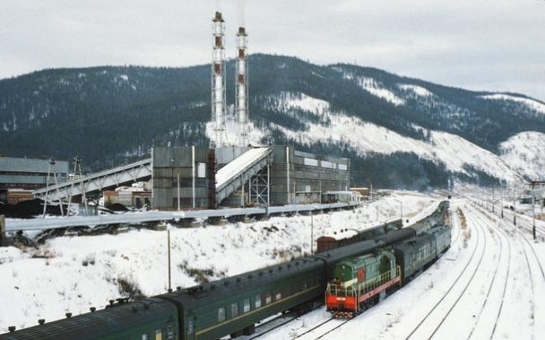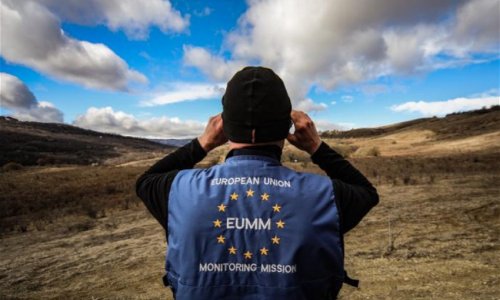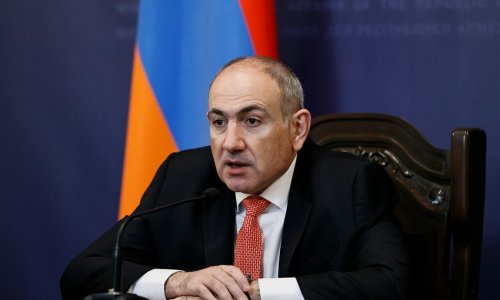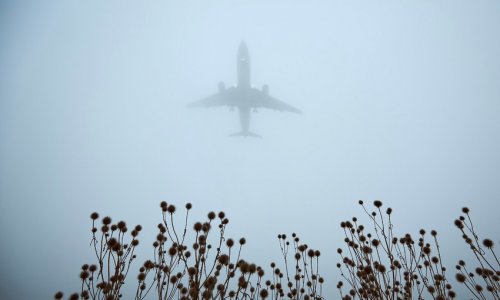Related slideshow: The winter treasures of Russia's Lake BaikalIt was 8 am, and around me the denizens of the open-plan platzkartny (third class) carriage were starting to wake up. There were two new passengers on the bunks below who had got on in the middle of the night, somewhere west of Komsomolsk-on-Amur. Andrei, who looked like a Russian George Clooney, was drinking a litre can of Baltica beer and heading north, beyond the town of Neryungri, to work in a mine. Yura was returning to Tynda, his hometown, because the mining company he worked for near Khabarovsk hadn’t paid him for four months. “Some friends called me, told me that there’s a job back home,” he said.The BAM was originally conceived in the 1930s as a hugely ambitious engineering project that would blaze a path through some of Russia’s least hospitable terrain, creating easier access to Siberia’s vast mineral wealth and facilitating colonisation of the region. Running parallel to the Trans-Siberian railway – from the Tayshet junction in the west all the way to Sovetskaya Gavan on the Pacific coast – one of its goals was to help divert heavy freight traffic from the more famous rail line. But despite costing around billions of rubles to build – with construction not fully complete until 1991 – the Baikal-Amur Mainline remains underused.Unlike the busy cities along the Trans-Siberian, which have undergone rapid change over the last few years due to increased train traffic and an influx of foreign travellers, the towns along the BAM remain part of the land that time forgot, their Soviet architecture virtually unchanged. The BAM is only 400km north of the Trans-Siberian, but the difference is palpable: BAM passengers tend to be predominantly local and poor – and, with the exception of Severobaikalsk (the jumping off point for Lake Baikal), very few foreigners ever climb aboard. “Have you ever had caviar?” asked Valera, a blond man with a scar on his cheek. He was off to work in a gold mine north of Tynda, and his sister had given him a tub for the road. We ate it with big spoons, washing it down with hot, sweet black tea. Tanya, a 21 year old from the village of Fevralskoye, halfway between Komsomolsk-on-Amur and Tynda, fended off Andrei’s drunken advances firmly but with good humour.Everyone wanted to know what life was like in my home country, the UK. How much does a one-bedroom flat cost? How much is a loaf of bread? What’s the weather like? They fell about laughing when I told them that, for decades, the UK’s coldest weather was -12C. Yura said that in winter, the temperature in Tynda drops to -47C. “When we moved to Khabarvosk, where it doesn’t get below -30,” Yura said his son asked, “‘Dad, when are we going to have winter?’”Outside, the dense forest seemed endless. We stopped at the tiny settlement of Etryken, one of several built to service the heavy freight traffic that never really materialised, despite the railway bisecting Russia’s rich mining districts. A number of mining projects planned during the last years of the Soviet Union never came to fruition, turning settlements into ghost towns as the younger generations fled to the cities to find work. I talked into the night with Nikita from Khabarovsk. Despite completing university, he was looking for work in the mines to be able support his family. “All I want is to live and work with dignity, to earn enough to raise my child, to go on holiday sometimes and to know that my job is stable,” he said. He added that he was tired of the corruption, the bureaucracy, the rudeness, the lack of patriotism: “Everyone just grabs a piece for themselves. Russia is divided into ‘clans’ and if you’re not part of them, it is difficult to get anything done.”The next morning, we alighted at Tynda, the unofficial BAM capital, nearly 7,000km east of Moscow. The station building was covered with gigantic faded posters celebrating the railway’s 35th anniversary in 2009: “the road built with love”. The railway is a Soviet triumph of man over nature, built in an inhospitable land of extreme winter cold and mosquito-cloud filled summers. But it was only in the later stages that the work was done by idealistic young Komsomol (Communist Youth League) members; between the 1930s and 1950s the railway was built with the blood and bones of at least half a million people, including inmates in gulag labour camps and Japanese prisoners of war.As hard as I tried, I couldn’t locate Tynda’s main attraction: the statue of the BAM worker, depicted as a muscled man wielding a sledgehammer. BAM’s most prominent monument, it is symbolic of the sheer effort of building the railway and a supposedly spectacular example of Socialist realism. I walked the entire length of the main street, passing a giant hammer and sickle sculpture, Hotel Yunost (ul Krasnaya Presnya 49; 7-41-65-643-534) – where travel writer Dervla Murphy stayed while penning Through Siberia By Accident – identikit concrete apartment blocks and several shashlik (grilled meat skewer) stands. Instead, I stumbled across the BAM History Museum (ul Sportivnaya 22) next to a replica barracks where BAM workers lived during the railway’s construction. Anna Nikolayevna, the middle-aged curator, proudly showed me around the lovingly collected exhibits that included Evenki reindeer herder artefacts (a shaman’s outfit, fur-lined hunting skis); a 1980s telephone switchboard used for communication between BAM towns; and faded photos of the men and women who built the railway. Lowering her voice in a conspiratorial fashion, she informed me that the statue of the BAM worker was taken away in the middle of the night a few years ago. No one knows where it’s gone. Back on board en route to Severobaikalsk, the land become mountainous and we passed dense forest bisected by wide rivers and glacial streams. A low-hanging mist obscured the foothills of the craggy peaks. My neighbours this time were Galya, a retired matron who moved from the Urals to Siberia in the 1970s to work as one of the BAM Komsomol volunteers, lured by the triple pay incentive; and Valera and Nastya, married carriage attendants on home leave. Galya informed me that life in communist times was “like paradise”, and that she’d been able to save up for apartments for herself and her children. She gave me sausages and home-grown tomatoes, refusing to accept anything in return. Valera came back from socialising in another carriage, drunk and covered in blood. He’d had too much vodka, lost his mobile phone and accused of one of his co-drinkers of stealing it. “Poor Nastya, she must suffer with a man like that,” I commented. Galya was unsympathetic: “They’re as good as each other; she left her husband to be with him.” Then, with over-familiarity typical of older Russians, she told me that a woman of my age should start having children. I was relieved to alight at Severobaikalsk and leave her behind.If Galya represented the old Soviet order, then Anya, also alighting at Severobaikalsk, was the best of new Russia. Devoted to conservation, she was part of the Great Baikal Trail project, an environmental NGO dedicated to promoting ecotourism in the Baikal area. Every summer, local and foreign volunteers converge on Lake Baikal, the oldest, deepest and largest lake on Earth, to signpost and improve the hiking trails that skirt the water. Jennifer and Joy, American volunteers accompanying Anya, were from the Lake Tahoe area in California, part of an exchange program for Russian and American students to learn about conservation and ecology.Before getting back on the BAM and heading onwards to Western Russia, I said my farewells to Lake Baikal. It was a rainy and cold night, and the four of us were soaking at the rustic Goudzhekit hot springs – heaven for a traveller who hadn’t had a bath in months. I floated around with a stupid grin on my face. “In the winter, when it gets to -40C, it’s even better,” Anya said smiling.(BBC)ANN.Az
A train to nowhere in Siberia
World
20:45 | 26.02.2014

A train to nowhere in Siberia
I woke up when the train’s soporific rocking and chugging came to an abrupt halt, momentarily disorientated. I was somewhere along the Baikal-Amur Mainline (BAM), the 3,140km-long railway that runs through northern Siberia. I was heading west, towards home.
Follow us !










